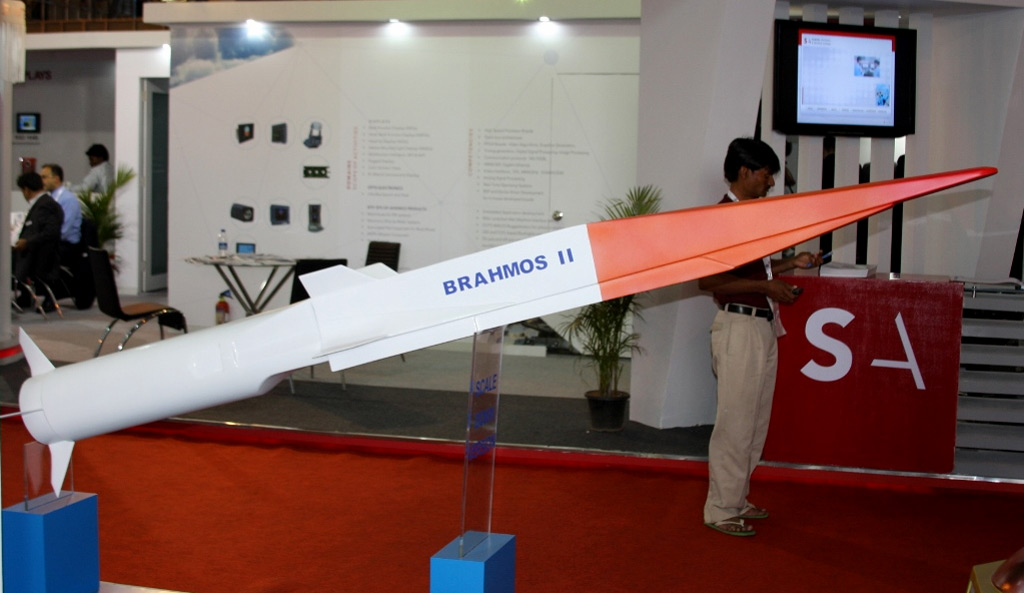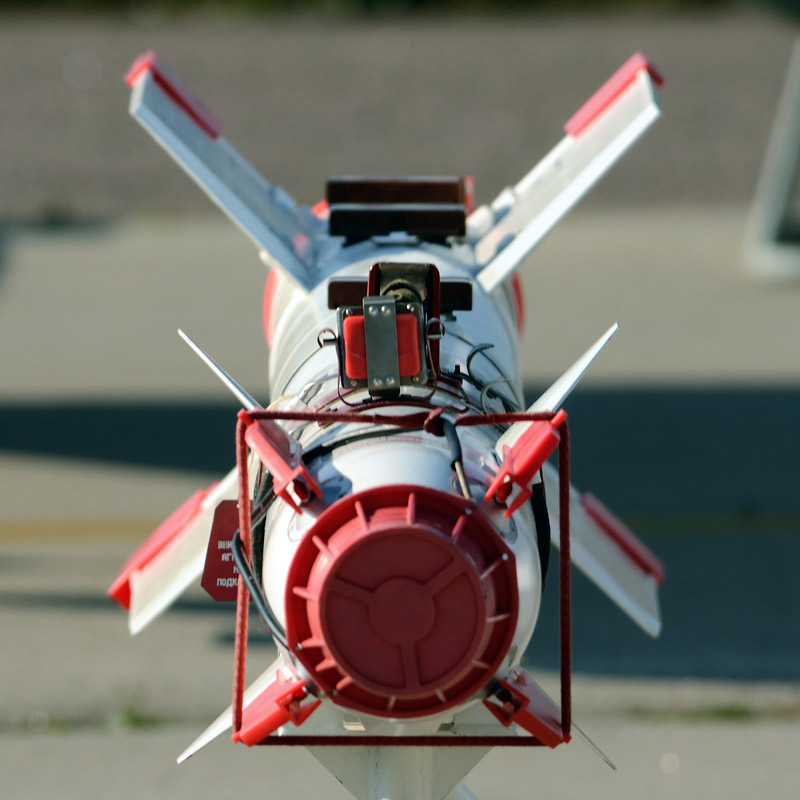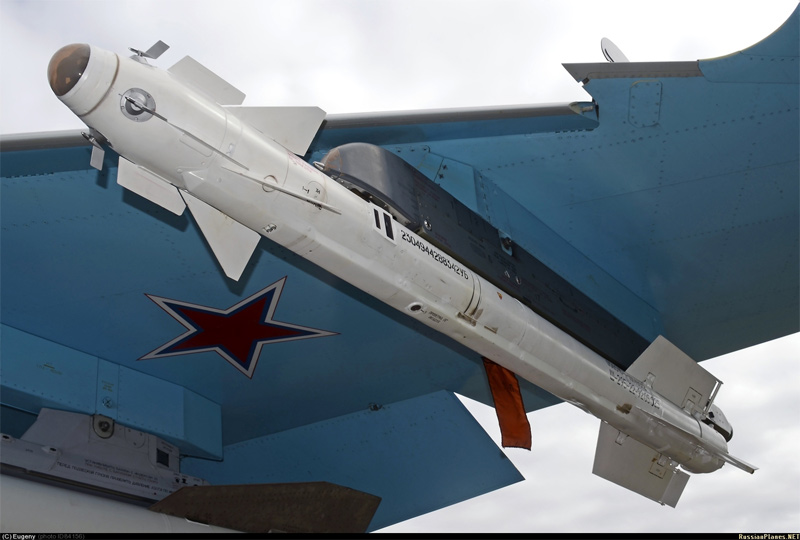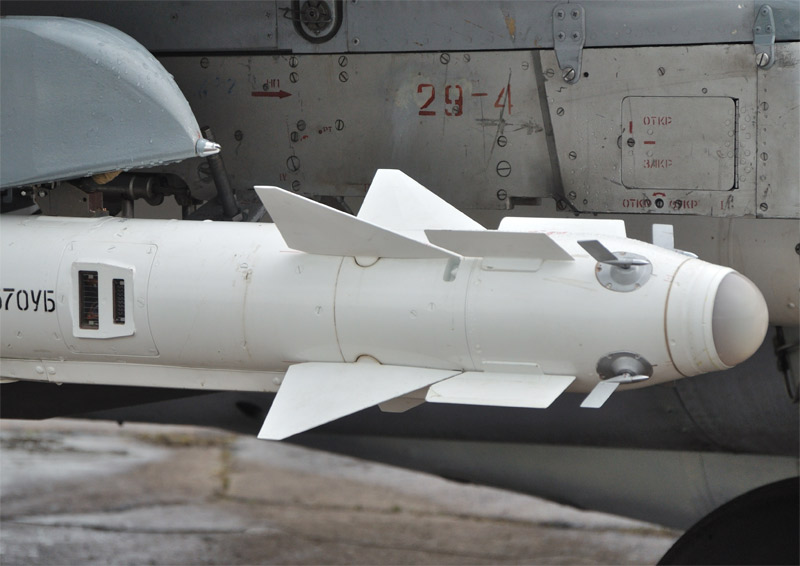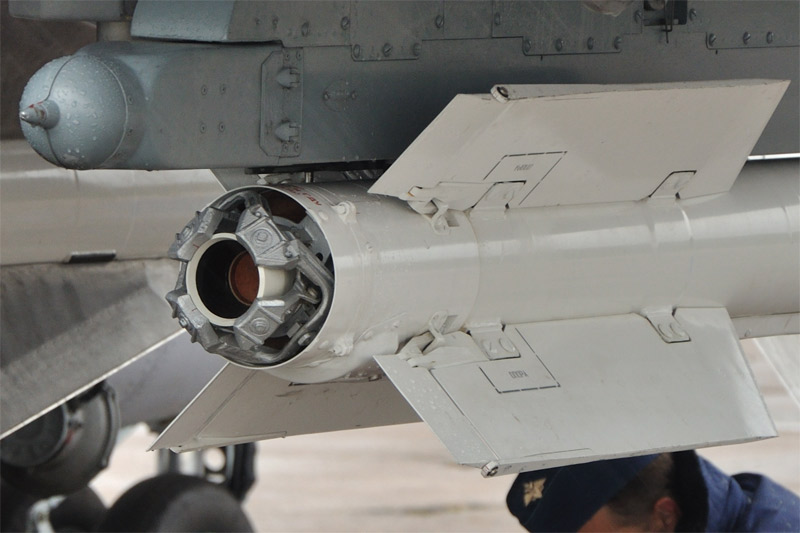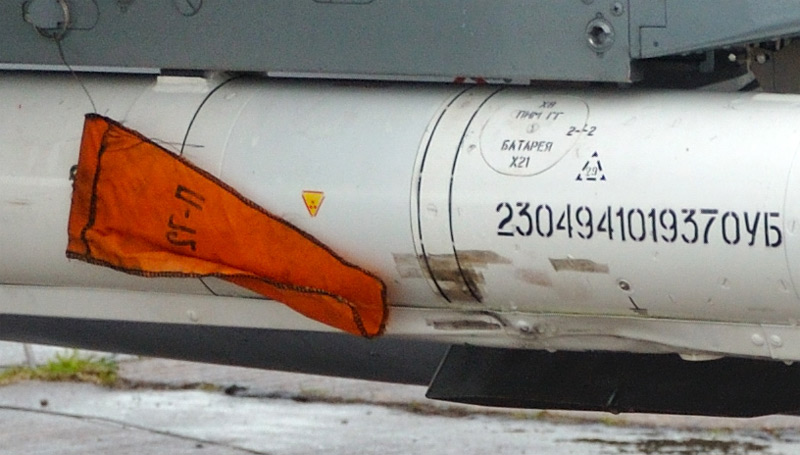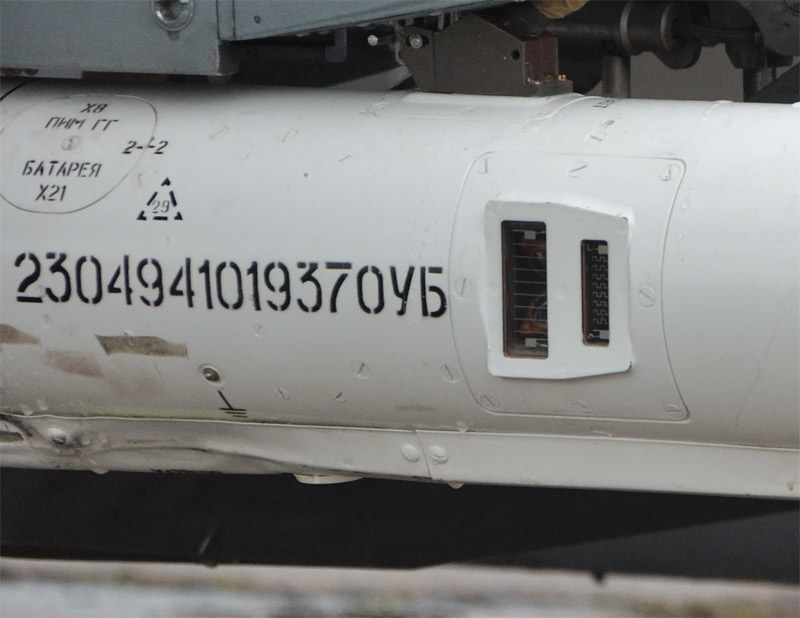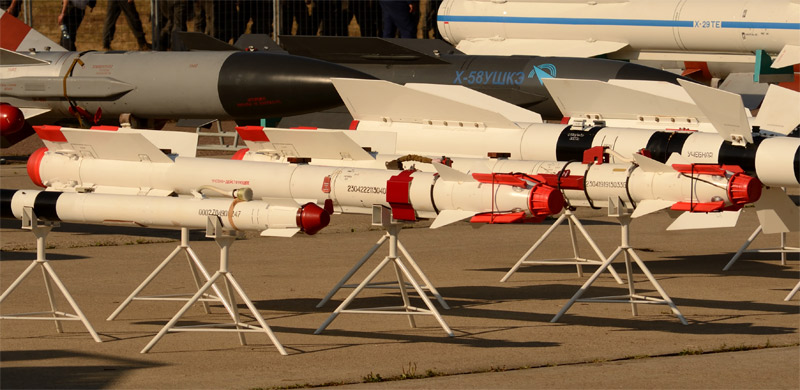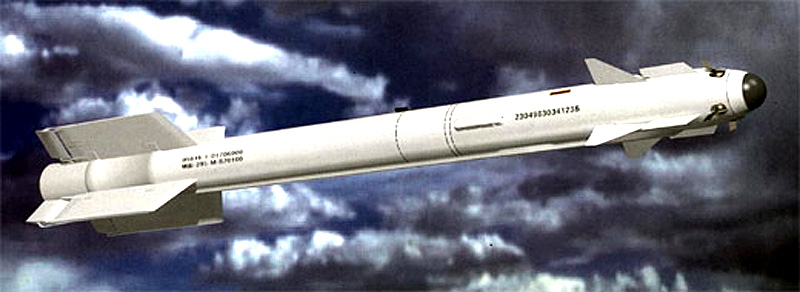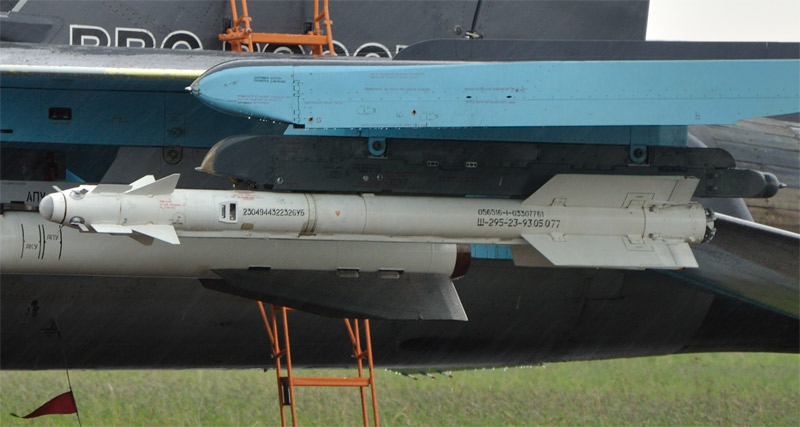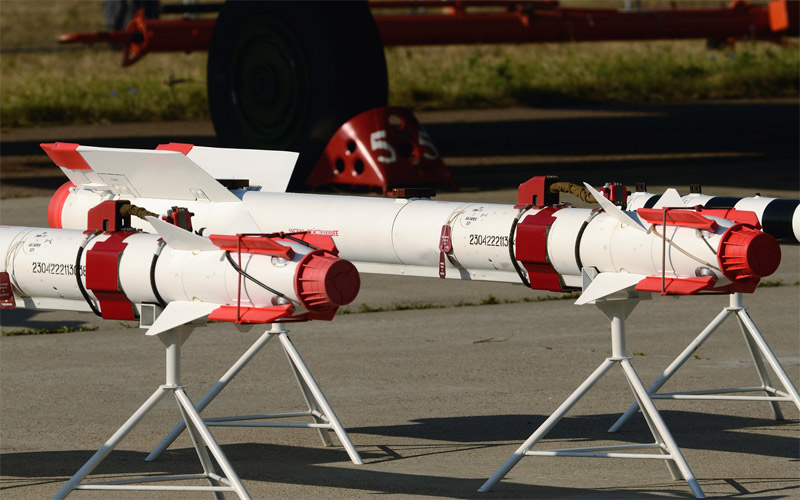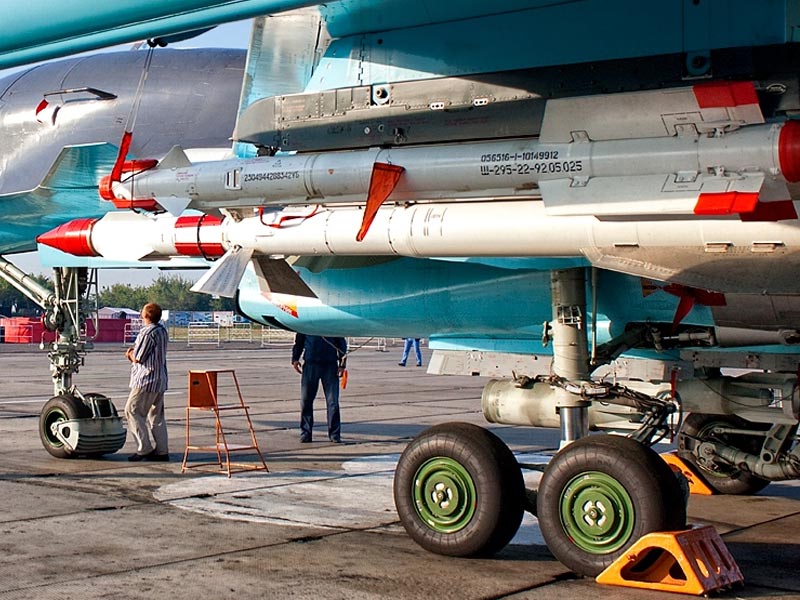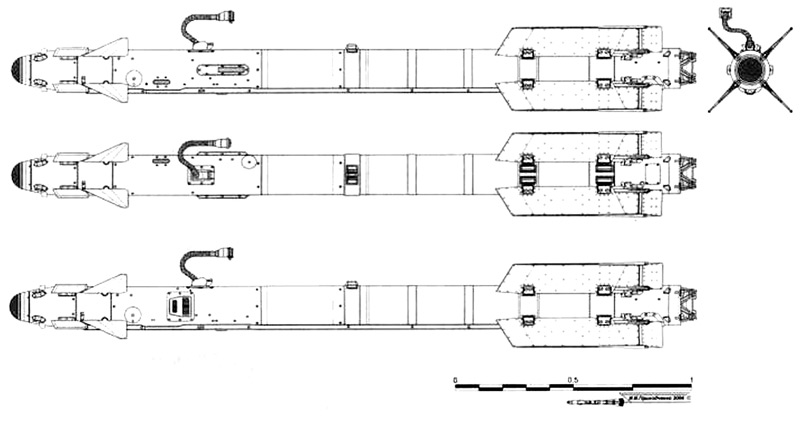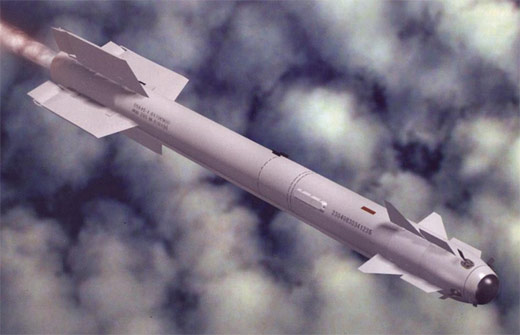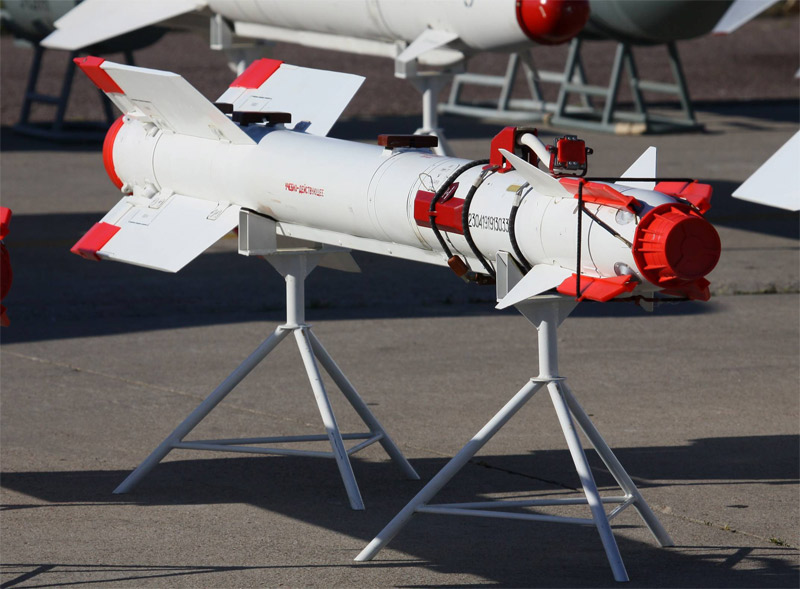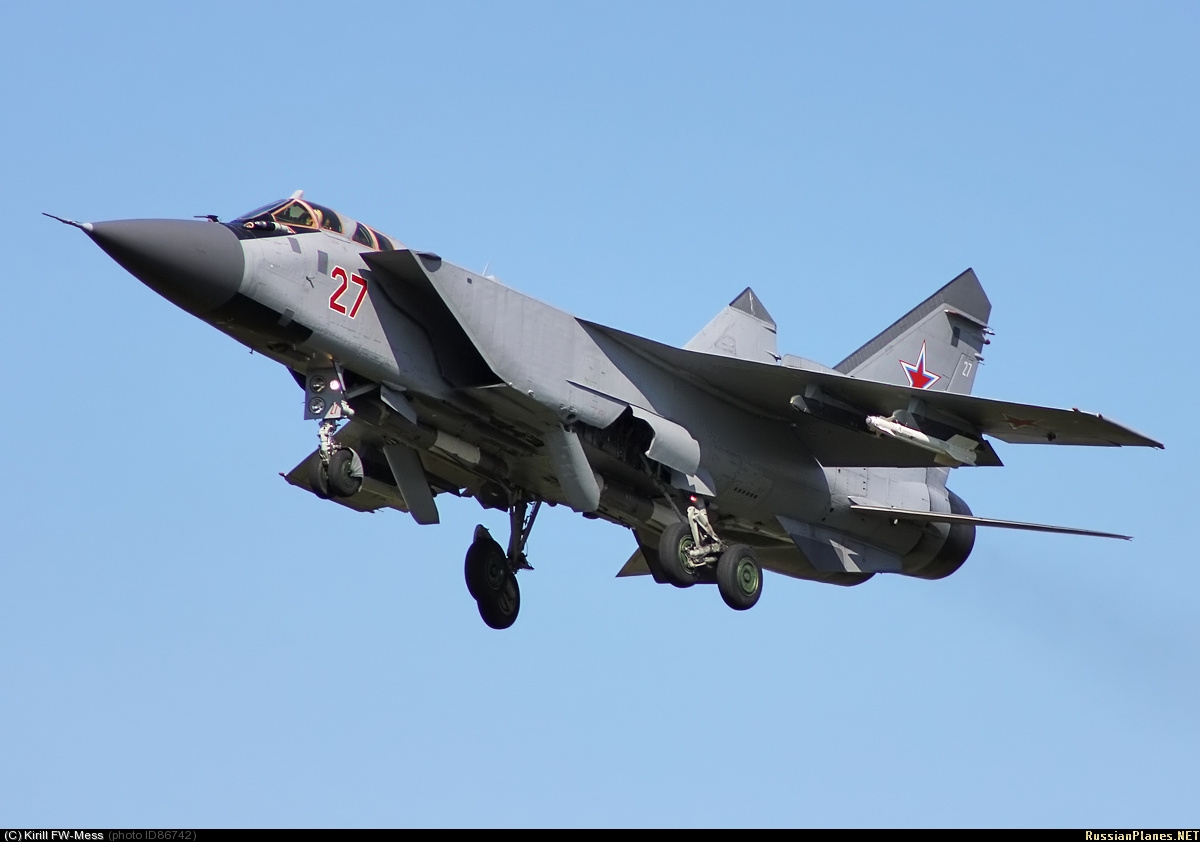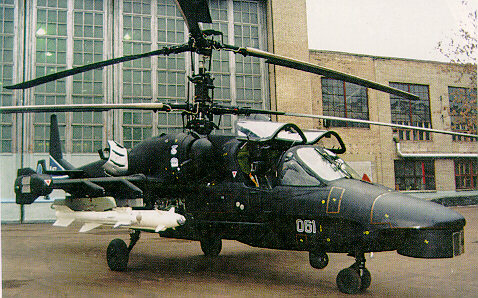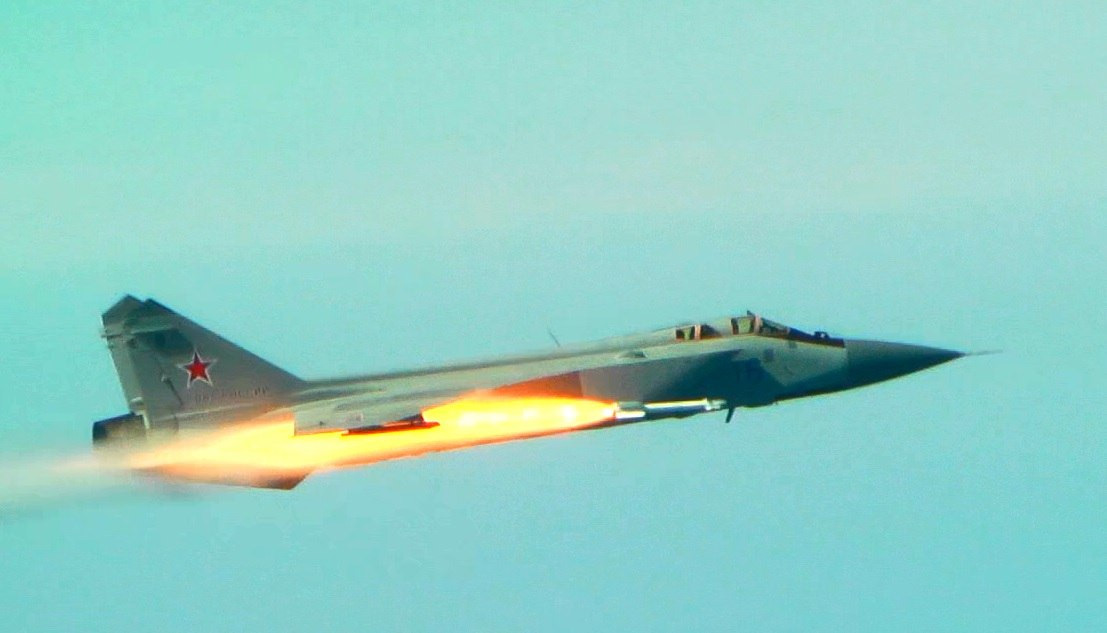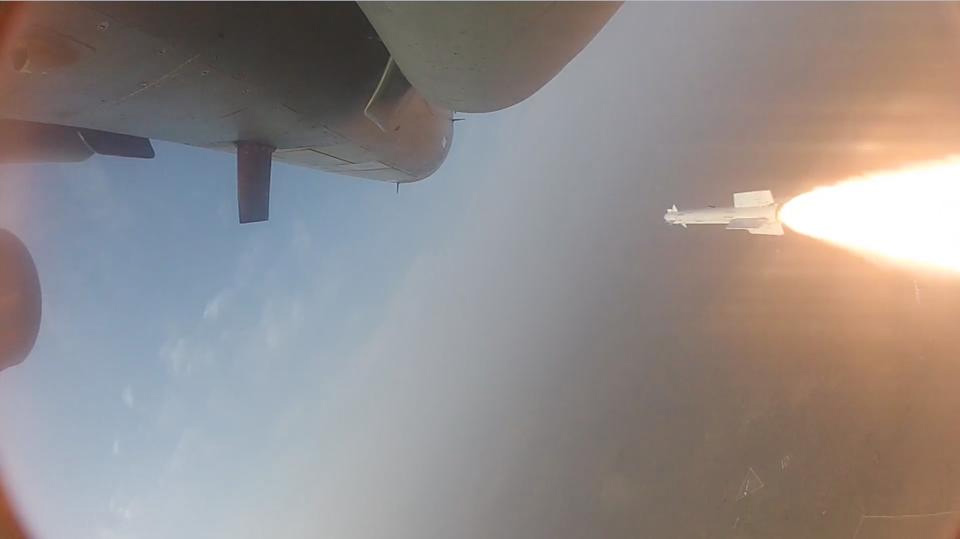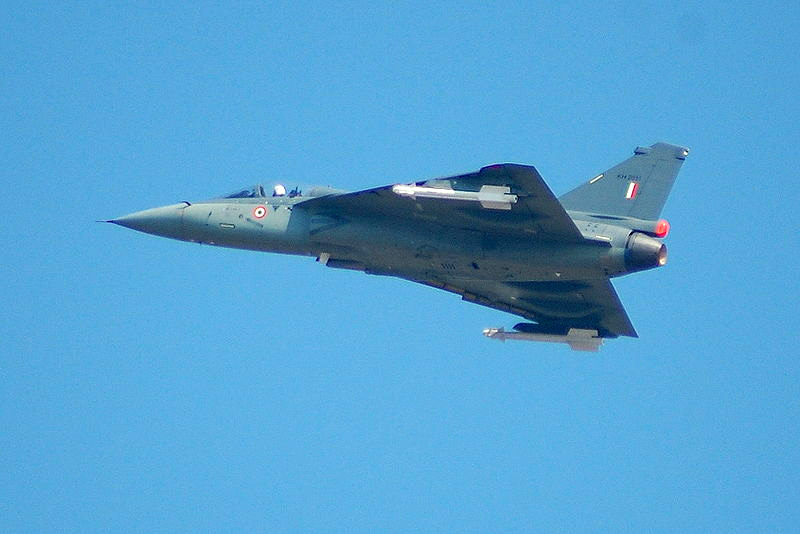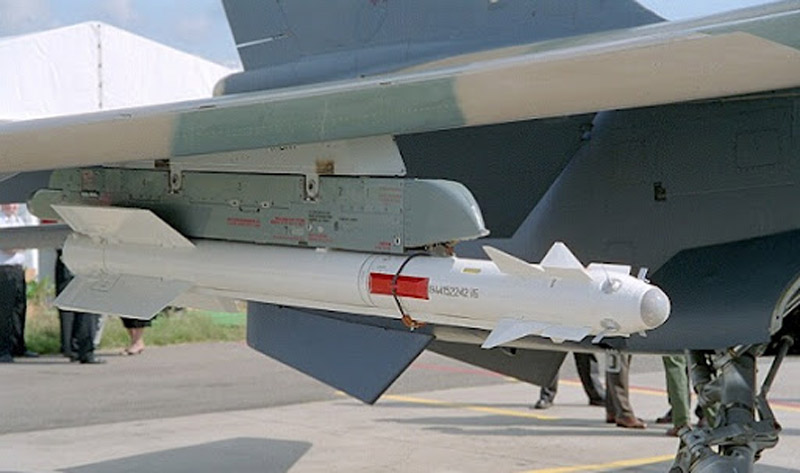Interspecific missile system with a hypersonic missile / anti-ship missile operational use. According to available information, the development of the complex is being "NPO Machine Building" ( East -. Annual Report, page 15 ). The first application for the development of the complex in the media refer to February 2011. There was also not officially confirmed the assumption that the export version of the missile "Zircon" is RCC " of BrahMos-II of ". Until 2012 there was also a hypothesis that the complex yavlyaeetsya successor complex " Bolide " development of the NPO Machine Building ".
In 2011, the NGO "Engineering" as part of the Directorate 15-51 was organized by a group of leading designers on the 3M-22 with the theme Sergey Bunakov, Denis Vitushkin, Yuri Vorotyntseva and Alexey Naydenov ( source ). In the same 2011 it was developed conceptual design of complex "Zircon-C", and, accordingly, the preliminary designs of the complex subsystems. Part D - "Zircon-S-ARC" and "C-Zircon-PB" structural division performed HRCT - UPKB "Detail" ( source ). As of the 2011 serial production in the coming years missiles of "Zircon" is planned at "Strela" (Orenburg, East -. Annual Report, page 15 ). Complete the establishment of the missile system is planned until 2020
According to the analysis of the information relating to the second half of 2012 has been suggested that the topic of "Zircon" either closed or changed. The actual evidence for this assumption was not, but there is a possibility that it is difficult to work on the project for technical reasons could cause the appearance of the Government's proposals for the unification of the ICD "Rainbow" from "NPO Machine Building" for the organization of work on hypersonic vehicles.
May 25, 2013 media report ( source)That the development of the complex continues according to plan, but during 2012 there was a pause caused by technical problems. Direct connection with the reorganization of work on hypersonic and the situation with the theme of OCD or research "Zircon" no. "We now have before is the concept of hypersonic technology, which introduces GZLA classification, the priority development of various technologies and materials for GZLA. The main focus of the first stage, of course, taken the development of the system that has been tested by us. The rest of the direction yet scheduled as experimental with the creation of the demonstrators. However, the existing backlog in them is consistent with international standards. No less important than the creation of technologies, materials and demonstrator s, Now is the development of other concepts - Concepts of combat use of hypersonic weapons systems. It is necessary to answer the question - what is needed such a system, how they should be used, in any form and manner which the objectives will be achieved by the application. And the main question - what is the uniqueness of these systems and what tasks they can decide that it is impossible to solve the existing weapons systems. "
It is believed that the first prototype of the rocket launches from the aircraft carrier Tu-22M3 were made at the site in 2012-2013 Ahtubinsk The launches were probably or throwing (without starting the engine, a rocket) or unsuccessful (it is believed that in the case of successful launches of this would be reported in the media). See below chronology starts.
The message source from the July 15, 2015 stated the readiness to test RPC "Zircon". Probably, it is a flight development tests. Flight tests of the media began in the autumn of 2015 ( source , 2016). 19/02/2016 Source Media reportsThat are already flight-design state tests rocket at the end of which a decision is made on the adoption of a rocket "Zircon" adopted Russian Navy ships. April 19, 2016 reported that the missile "Zircon", state that the test will be completed in 2017, in 2018 to be put into serial production ( source ).
February 8, 2017 the media reported about the plans of the test missile launch "Zircon" a sea carrier spring 2017 It is reported that previous rocket is launched from the Plesetsk test site, which is contrary to the existing environment in the expert views ( source ) . Most likely Plesetsk called by mistake and it is a training ground Nenoksa.
These are tentative and are at best prikidochnymi. Sources indicated. Identification missile 3M-22 - source . references to the index 3Q-22 - source . SourceWestern name SS-NX-33.
Estimated table hypersonic missile tests:
21/12/2018 of source reports that the missile test "Zircon" has been going on for about 4 years and only made more than 10 starts product on maritime targets and tests from surface ships is scheduled to begin in 2019. This report has not been confirmed, and possibly It is not true.
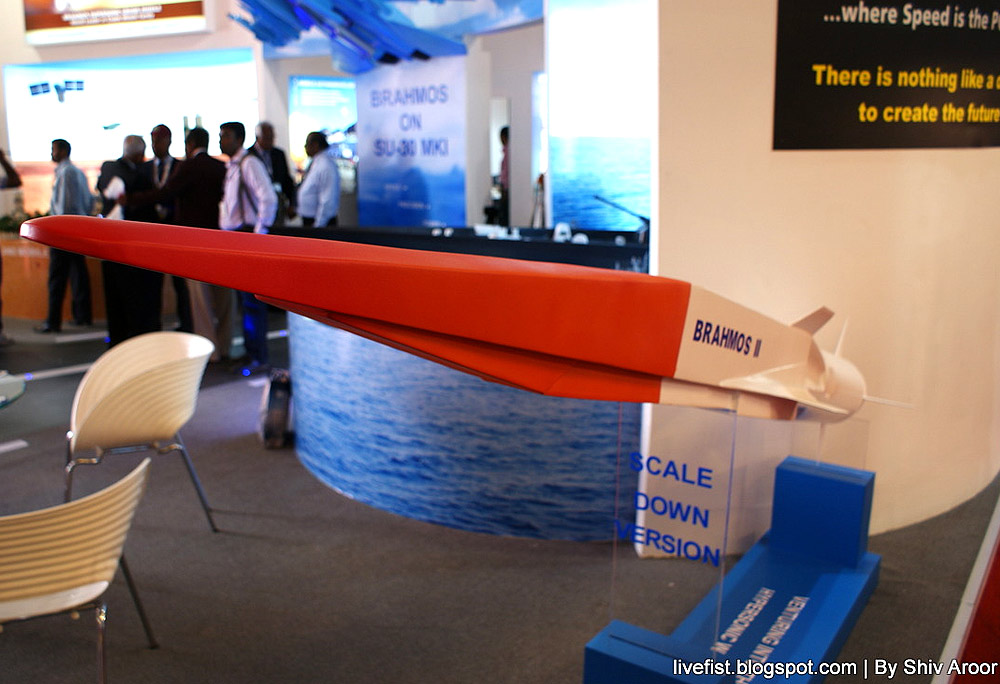
Model of a missile BrahMos-II on the opening day Aero India 2013, Bangalore, 06/02/2013 (photo - Shiv Aroor, http://livefist.blogspot.ru ).
Starter equipment - on modernized missile cruiser pr.11442M assumed application missiles 3M-22 from Universal launcher vertical launch UVLM 14-11442M-3C. Development and production of launchers 3C-14-11442M is "Design Bureau of Special Engineering" (St. Petersburg, is a concern "Almaz-Antey"). Production will be conducted based on a joint decision №235 / 1/1/8565 of 6 November 2014. and technical specification "Finalization UVLM 3C-14-22350 complexes for 3K-14, 9K, 3M55, 3K-22 with respect to the order 11442M ( source )
consider that embodiment launcher 3C-14 for use rockets" Zircon "probably calculated long starting load than a standard launcher 3C-14 (May 2017).
The media reported that the rocket must be "achieved the universality of the defeat of sea and land targets, as well as the unification of the types of start - underwater, surface, ground" ( source , 2016).
The control system and guidance :
In 2011, the NGO "Granit-Electron" is designed to create a preliminary design of autopilot systems and inertial navigation (Sain) for 3M22 products (source - Annual Report NGO "Granit-Electron" in 2011). In 2012, Concern "Granit-Electron" led the development of design documentation and control apparatus for RCC 3M22 ( East -. Annual report of JSC "Concern" Granit-Electron " ).
cm. - Annual report of JSC "NPO Electromechanics" in 2011 ). During 2012, the NGO Electromechanics planned to work on the theme "Zircon".
Sketchy equipment projects on the topics "Zircon-C-ARC" and "Zircon-C-RV" made a structural subdivision of HRCT - UPKB "Detail" and reviewed in 2011. Perhaps it is a radio altimeter involved in the missile control system ( source ) .
The missile 3M-22 :
Construction - presumably missiles carried on a "lifting body" with a small aspect ratio wings. It is also alleged missile has a starting and sustainer stage.Rocket construction is designed to heat at movement in the atmosphere up to 1500 deg. C and above.

Propulsion : probably starting and sustainer solid propellant ramjet.
The development of the cruise missile engine, probably a section of the 08 "NGO Mashnostroeniya". As of 2009-2010, together with the Bank "Orion" is fulfilled with a ramjet propulsion system "for foreign customers" - presumably for the BrahMos-II missile. Successful test firing of engines made in 2009 (source ).
FSUE NIIPM (Perm) in the annual report for 2013 according to the charge of solid fuel, for igniters and gas generators including weapons systems "Zircon".
There is speculation that a rocket ramjet classic clause is used without a supersonic combustion. The assumption is based on an interview with Academician Fedosov from 04.09.2017, theThat work to create a ramjet SG has not yet emerged from the experimental phase.
TTX missiles :
length - estimated between 8 and 10.5 meters (more likely big number)
Range:
- 300-400 km ( . East - the United States have experienced , source )
- 800-1000 km (estimate)
Speed:
- not less than 4.5 M ( source )
- presumably 5-6 M ( source )
- 6 M ( source , 2016)
- up to 8 M ( source , 15.04.2017, at the source , 2018)
Combat equipment :
Warhead missiles designed and produced GosNIImash as of 2014 (ist. - Annual report GosNIImash for 2014 ).
Carriers :
- PLA K-560 "Severodvinsk" pr.885 / Graney - winter 2016-2017 gg PLA has been converted for testing RCC "Zircon" from the launcher UKSK 3C-14.
- PLA pr.885M "Yasen-M" - probably the PLA will be equipped with an advanced complex 3C-14 with the use of missiles "Zircon".
- SSGNs pr.949AM - probably will be able to use SIC "Zircon" after modernization (instead RCC P-700 "Granite").
- heavy nuclear missile cruiser pr.11442 "Peter the Great" - after the upgrade, which is planned for 2019-2022 gg composed launchers 3C-14 ( a source ).
pr.11442M "Admiral Nakhimov" - after the upgrade, which is conducted as of 2016 it is planned the use of the 3C-14-11442M (launchers source ).
- perspective PLAKR 5th generation "Husky"
Status : Russia - conclusions that in the following events it participated rocket complex "Zircon" is the assumption!
- 2012 July-August - allegedly throwing test (or test failures) missile from the aircraft. Presumably with the Tu-22M3. Tests were conducted in Akhtubinsk (source ).
- 2013 August - presumably ispytatelny second start - unsuccessful or partially successful - after start-up an interview with the head of Tactical Missiles Corporation Obnosov the information about the missiles that fly at hypersonic short (4.5m) we already have ( source ).
- 2013 September - before the end of the month is expected another test launch - presumably missile prototype "Zircon", or similar hypersonic missile (source ).
- 2013 September 30 - According to a source, which is likely to test launch of the missile ended unsuccessfully ( source ).
- 2015 July 15 - source reports the readiness to test RPC "Zircon". Probably, it is a full-flight development tests.
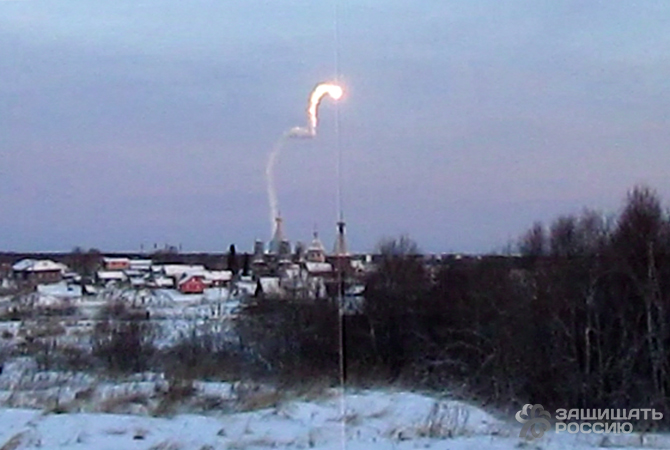


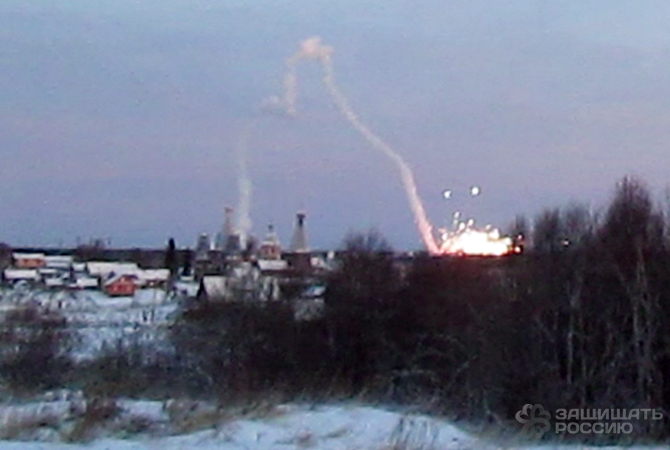
Unsuccessful rocket firing on the range Nenoksa 15 December 2015 Supposedly this is the first launch of the missile "Zircon" from the ground launch complex (photo - http://defendingrussia.ru/).
Sources :
Annual Report on the activities of PO "Strela" for 2011 in 2012 ( source )
Annual report of JSC "Concern" Granit-Electron "for 2012, St. Petersburg, 2013
Annual report of JSC" NPO Electromechanics "for 2011, Miass, 2012 ( source ).
to Lenta.ru. 2011
Summing up the results of the year. The site http://www.dancomm.ru , 2011, in 2013
the United States experienced a new supersonic rocket. The site of "The View" in 2011 ( source ).
In 2011, the NGO "Engineering" as part of the Directorate 15-51 was organized by a group of leading designers on the 3M-22 with the theme Sergey Bunakov, Denis Vitushkin, Yuri Vorotyntseva and Alexey Naydenov ( source ). In the same 2011 it was developed conceptual design of complex "Zircon-C", and, accordingly, the preliminary designs of the complex subsystems. Part D - "Zircon-S-ARC" and "C-Zircon-PB" structural division performed HRCT - UPKB "Detail" ( source ). As of the 2011 serial production in the coming years missiles of "Zircon" is planned at "Strela" (Orenburg, East -. Annual Report, page 15 ). Complete the establishment of the missile system is planned until 2020
According to the analysis of the information relating to the second half of 2012 has been suggested that the topic of "Zircon" either closed or changed. The actual evidence for this assumption was not, but there is a possibility that it is difficult to work on the project for technical reasons could cause the appearance of the Government's proposals for the unification of the ICD "Rainbow" from "NPO Machine Building" for the organization of work on hypersonic vehicles.
May 25, 2013 media report ( source)That the development of the complex continues according to plan, but during 2012 there was a pause caused by technical problems. Direct connection with the reorganization of work on hypersonic and the situation with the theme of OCD or research "Zircon" no. "We now have before is the concept of hypersonic technology, which introduces GZLA classification, the priority development of various technologies and materials for GZLA. The main focus of the first stage, of course, taken the development of the system that has been tested by us. The rest of the direction yet scheduled as experimental with the creation of the demonstrators. However, the existing backlog in them is consistent with international standards. No less important than the creation of technologies, materials and demonstrator s, Now is the development of other concepts - Concepts of combat use of hypersonic weapons systems. It is necessary to answer the question - what is needed such a system, how they should be used, in any form and manner which the objectives will be achieved by the application. And the main question - what is the uniqueness of these systems and what tasks they can decide that it is impossible to solve the existing weapons systems. "
It is believed that the first prototype of the rocket launches from the aircraft carrier Tu-22M3 were made at the site in 2012-2013 Ahtubinsk The launches were probably or throwing (without starting the engine, a rocket) or unsuccessful (it is believed that in the case of successful launches of this would be reported in the media). See below chronology starts.
The message source from the July 15, 2015 stated the readiness to test RPC "Zircon". Probably, it is a flight development tests. Flight tests of the media began in the autumn of 2015 ( source , 2016). 19/02/2016 Source Media reportsThat are already flight-design state tests rocket at the end of which a decision is made on the adoption of a rocket "Zircon" adopted Russian Navy ships. April 19, 2016 reported that the missile "Zircon", state that the test will be completed in 2017, in 2018 to be put into serial production ( source ).
February 8, 2017 the media reported about the plans of the test missile launch "Zircon" a sea carrier spring 2017 It is reported that previous rocket is launched from the Plesetsk test site, which is contrary to the existing environment in the expert views ( source ) . Most likely Plesetsk called by mistake and it is a training ground Nenoksa.
These are tentative and are at best prikidochnymi. Sources indicated. Identification missile 3M-22 - source . references to the index 3Q-22 - source . SourceWestern name SS-NX-33.
Estimated table hypersonic missile tests:
| No.PP | date | Location | Carrier | Status | Note Sources |
| July-August 2012 | Axhtubinsk GLITs Air Force | Tu-22M3? | throwing or a bad start | According to the newspaper "Izvestia" ( source ) | |
| July-August 2013 | Axhtubinsk GLITs Air Force | Tu-22M3? | short flight , a bad start | According to an interview with the head of Tactical Missiles Corporation at the MAKS-2013 ( source ) | |
| 30.09.2013 Mr. | Axhtubinsk GLITs Air Force | Tu-22M3? | bad start | According to a publication launch it was September 30, 2013, or 1-2 days earlier ( source ) | |
| Autumn 2015 | start flight tests | ( Source , 2016) | |||
| 15.12.2015 Mr. | Nenoksa, 21 minutes GTSMP | Ground Launch Complex | emergency start | identification of the presumed | |
| 01 | 16 or March 17, 2016 | Nenoksa, 21 minutes GTSMP | Ground Launch Complex | successful start | The media reported about the beginning of the rocket test "Zircon" from the ground launch complex ( source ) |
| 02 | September-December 2016 | Nenoksa, 21 minutes GTSMP? | Ground Launch Complex? | Start, which completes the first stage of flight development tests of the missile. Plans announced in the media 8 August 2016 ( source ) | |
| 03 | April 10-15 2017 | White Sea | presumably PLA K-560 "Severodvinsk" pr.885 | start with the first marine vehicle | Plans to conduct trials with the sea in the spring of 2017 the media announced in the media 8 February 2017 ( source ). 23.02.2017 was made a forecast about the test launch of missiles from submarines "Severodvinsk". 15.04.2017 was reported reaching the rocket speed 8M ( source ). 21.04.2017 The Minister of Defense of Russia announced the successful completion of the PLA "Severodvinsk" first combat mission in the history of the boat. |
| 04 | May 30, 2017 | White Sea ? | presumably PLA K-560 "Severodvinsk" pr.885 | successful launch of Western data | Attached western data ( source ) |
| 05 | December 10, 2018 | White Sea ? | presumably PLA K-560 "Severodvinsk" pr.885 | successful launch of Western data | Attached western data ( source ) |
21/12/2018 of source reports that the missile test "Zircon" has been going on for about 4 years and only made more than 10 starts product on maritime targets and tests from surface ships is scheduled to begin in 2019. This report has not been confirmed, and possibly It is not true.

Model of a missile BrahMos-II on the opening day Aero India 2013, Bangalore, 06/02/2013 (photo - Shiv Aroor, http://livefist.blogspot.ru ).
Starter equipment - on modernized missile cruiser pr.11442M assumed application missiles 3M-22 from Universal launcher vertical launch UVLM 14-11442M-3C. Development and production of launchers 3C-14-11442M is "Design Bureau of Special Engineering" (St. Petersburg, is a concern "Almaz-Antey"). Production will be conducted based on a joint decision №235 / 1/1/8565 of 6 November 2014. and technical specification "Finalization UVLM 3C-14-22350 complexes for 3K-14, 9K, 3M55, 3K-22 with respect to the order 11442M ( source )
consider that embodiment launcher 3C-14 for use rockets" Zircon "probably calculated long starting load than a standard launcher 3C-14 (May 2017).
The media reported that the rocket must be "achieved the universality of the defeat of sea and land targets, as well as the unification of the types of start - underwater, surface, ground" ( source , 2016).
The control system and guidance :
In 2011, the NGO "Granit-Electron" is designed to create a preliminary design of autopilot systems and inertial navigation (Sain) for 3M22 products (source - Annual Report NGO "Granit-Electron" in 2011). In 2012, Concern "Granit-Electron" led the development of design documentation and control apparatus for RCC 3M22 ( East -. Annual report of JSC "Concern" Granit-Electron " ).
cm. - Annual report of JSC "NPO Electromechanics" in 2011 ). During 2012, the NGO Electromechanics planned to work on the theme "Zircon".
Sketchy equipment projects on the topics "Zircon-C-ARC" and "Zircon-C-RV" made a structural subdivision of HRCT - UPKB "Detail" and reviewed in 2011. Perhaps it is a radio altimeter involved in the missile control system ( source ) .
The missile 3M-22 :
Construction - presumably missiles carried on a "lifting body" with a small aspect ratio wings. It is also alleged missile has a starting and sustainer stage.Rocket construction is designed to heat at movement in the atmosphere up to 1500 deg. C and above.

Propulsion : probably starting and sustainer solid propellant ramjet.
The development of the cruise missile engine, probably a section of the 08 "NGO Mashnostroeniya". As of 2009-2010, together with the Bank "Orion" is fulfilled with a ramjet propulsion system "for foreign customers" - presumably for the BrahMos-II missile. Successful test firing of engines made in 2009 (source ).
FSUE NIIPM (Perm) in the annual report for 2013 according to the charge of solid fuel, for igniters and gas generators including weapons systems "Zircon".
There is speculation that a rocket ramjet classic clause is used without a supersonic combustion. The assumption is based on an interview with Academician Fedosov from 04.09.2017, theThat work to create a ramjet SG has not yet emerged from the experimental phase.
TTX missiles :
length - estimated between 8 and 10.5 meters (more likely big number)
Range:
- 300-400 km ( . East - the United States have experienced , source )
- 800-1000 km (estimate)
Speed:
- not less than 4.5 M ( source )
- presumably 5-6 M ( source )
- 6 M ( source , 2016)
- up to 8 M ( source , 15.04.2017, at the source , 2018)
Combat equipment :
Warhead missiles designed and produced GosNIImash as of 2014 (ist. - Annual report GosNIImash for 2014 ).
Carriers :
- PLA K-560 "Severodvinsk" pr.885 / Graney - winter 2016-2017 gg PLA has been converted for testing RCC "Zircon" from the launcher UKSK 3C-14.
- PLA pr.885M "Yasen-M" - probably the PLA will be equipped with an advanced complex 3C-14 with the use of missiles "Zircon".
- SSGNs pr.949AM - probably will be able to use SIC "Zircon" after modernization (instead RCC P-700 "Granite").
- heavy nuclear missile cruiser pr.11442 "Peter the Great" - after the upgrade, which is planned for 2019-2022 gg composed launchers 3C-14 ( a source ).
pr.11442M "Admiral Nakhimov" - after the upgrade, which is conducted as of 2016 it is planned the use of the 3C-14-11442M (launchers source ).
- perspective PLAKR 5th generation "Husky"
Status : Russia - conclusions that in the following events it participated rocket complex "Zircon" is the assumption!
- 2012 July-August - allegedly throwing test (or test failures) missile from the aircraft. Presumably with the Tu-22M3. Tests were conducted in Akhtubinsk (source ).
- 2013 August - presumably ispytatelny second start - unsuccessful or partially successful - after start-up an interview with the head of Tactical Missiles Corporation Obnosov the information about the missiles that fly at hypersonic short (4.5m) we already have ( source ).
- 2013 September - before the end of the month is expected another test launch - presumably missile prototype "Zircon", or similar hypersonic missile (source ).
- 2013 September 30 - According to a source, which is likely to test launch of the missile ended unsuccessfully ( source ).
- 2015 July 15 - source reports the readiness to test RPC "Zircon". Probably, it is a full-flight development tests.




Unsuccessful rocket firing on the range Nenoksa 15 December 2015 Supposedly this is the first launch of the missile "Zircon" from the ground launch complex (photo - http://defendingrussia.ru/).
Sources :
Annual Report on the activities of PO "Strela" for 2011 in 2012 ( source )
Annual report of JSC "Concern" Granit-Electron "for 2012, St. Petersburg, 2013
Annual report of JSC" NPO Electromechanics "for 2011, Miass, 2012 ( source ).
to Lenta.ru. 2011
Summing up the results of the year. The site http://www.dancomm.ru , 2011, in 2013
the United States experienced a new supersonic rocket. The site of "The View" in 2011 ( source ).
